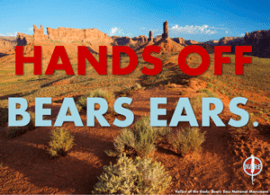
The Hopi Tribe, Pueblo of Zuni, and Ute Mountain Ute Tribe, represented by the Native American Rights Fund (NARF) continue to fight to protect the invaluable Bears Ears National Monument; protections that Native people advocated to create for many decades. On August 11, 2023, the U.S. District Court dismissed the cases challenging the Biden Proclamation and the Bears Ears protections were upheld. On October 30, 2023, the case was appealed to the Tenth Circuit Court of Appeals.
Background:
In southeastern Utah, two twin buttes rise dramatically from the landscape. Each has such a distinctive shape. All the Tribes that have lived near this land formation for thousands of years call it Bears Ears.
Since time immemorial, Native peoples cherished Bears Ears and regarded it of cultural, spiritual, historical and aesthetic importance. In spite of the differences of their histories, cultures, languages, and religions, the Ute Mountain Ute Tribe, Navajo Nation, Ute Indian Tribe of the Uintah Ouray, Hopi Nation, and Zuni Tribe, all hold the Bear’s Ears as a sacred place.
Well-traveled roads, villages, granaries, corrals, petroglyphs, pictographs, tipi rings, sweat lodges, hogans, wickiups, shade and other houses, cover the region. Bears Ears contains hundreds of thousands of objects of historic and scientific importance, many traditional cultural properties, and many sacred sites. Tribes in the region continue to collect plants, minerals, objects, and water for religious and cultural ceremonies and medicinal purposes at Bears Ears.
Native people hunt, fish, and gather within Bears Ears. They provide offerings and conduct ceremonies on the land. Some ceremonies, developed over centuries, use items that Native people can only harvest from the twin buttes.
Looting, vandalism, and Western development began desecrating these lands, and Native people struggled to protect the buttes. To protect the ongoing use and historic past of this sacred landmark, Tribal Nations organized the Bears Ears Inter-Tribal Coalition and sought the support of the Native American Rights Fund.
For the first time in history, five federally recognized Tribal Nations banded together to advocate for a national monument to protect a sacred site. In 2016, President Obama designated Bears Ears as a National Monument with a management plan that included tribal participation in stewarding this unique and beautiful shared resource.
Case Updates:
2010: The Bears Ears Proposal
In 2010, the grassroots nonprofit organization, Utah Diné Bikéyah (UDB) formed to coordinate the Bears Ears Proposal to seek protections for the region. Over several years, UDB comprehensively mapped cultural use of the area. Using the detailed
maps, UDB showed why the 1.9 million acres should be set aside as a cultural landscape. Their work showed that the Bears Ears landscape is one discrete unit, bound together in numerous ways, and blending perfectly with other protected federal and tribal lands.
Tribes in the region expressed their support the Bears Ears Proposal. The Hopi sent a letter of support, the Ute Mountain Ute Tribe, the Ute Indian Tribe, the Hualapai Tribal Council, the Pueblo Council of Governors, and others expressed support to protect the sacred landscape through the Bears Ears Proposal. After a series of town halls and open houses, the Bears Ears proposal won 64% of support from San Juan County residents in late 2014.
Out of synch with public will, the San Juan County Commissioners adopted an alternative proposal that received less than 1% of support. In January 2015, the San Juan County commissioners refused to work with UDB. Tribal representatives contacted Utah congressmen Bishop and Chaffetz, explained their exclusion, and requested to be included in Representative Bishop’s ongoing Public Land Initiative.
The San Juan County Commissioners agreed to a series of meetings with the Navajo Nation, Ute Mountain Ute Tribe, and UDB in February 2015. A month later, the San Juan Commissioners urged the Utah State Legislature to pass HB 3931, which designated large areas of Bears Ears as “Energy Zones” to use for fast-tracked for grazing, energy, and mineral development. The meetings between the county and Tribes did not produce any results. The county told tribal representatives that they did not need to attend the final meeting because the county commissioners did not require any further information from them. The county commissioners adopted a final proposal in August 2015, without input from the Tribes.

2015: Inter-Tribal Coalition and National Monument Designation
After the local land management process excluded Tribal participation, the Hopi Tribe, Navajo Nation, Ute Mountain Ute Tribe, Pueblo of Zuni, and Ute Indian Tribe, united to create the Bears Ears Inter-Tribal Coalition. This was the first time that a coalition of sovereign, Native tribes had worked together for land protections in the region.
The Coalition proposed Bears Ears become a 1.9 million-acre National Monument. With more than 100,000 archaeological sites and only one full-time law enforcement officer, the area represented the country’s most significant unprotected cultural landscape.
January 2016: Public Land Initiative for Bears Ears

In January 2016, Congressman Bishop released the Public Land Initiative (PLI), a bill that included protection for 1.39 million acres of Bears Ears yet did not reflect tribal input. The Bears Ears Inter-Tribal Coalition did not support the PLI for several reasons. For one, the PLI did not include tribal management of the area. Additionally, the PLI Bill would have taken Ute tribal land and given it to the state of Utah. The Bears Ears Inter-Tribal Coalition continued to petition for the Bears Ears Proposal and to make the region a National Monument.
July 2016: Department of Interior Visit to Bears Ears
In July 2016, federal officials, including Secretary of Interior Sally Jewell, met with Utah Governor Herbert’s office and made an official visit to the Bears Ears region. During the visit, Jewell attended a public meeting to hear comments from local residents. At that meeting, thousands of people attended, and more than 50 people commented. A majority of attendees spoke in favor of the Bears Ears designation as protected lands.
December 2016: Establishment of Bears Ears National Monument
In December 2016, Congress adjourned without voting on Bishop’s PLI. With this lack of legislative action, President Obama released his Bears Ears National Monument proclamation on December 28, 2016. Obama’s monument was a compromise between Bishop’s Public Land Initiative and the Coalition’s Bears Ears Proposal. At 1.35 million acres, the monument’s boundaries were closely aligned to those of the PLI, but the proclamation also included a management plan that empowered tribal leaders to provide guidance and recommendations on care of their ancestral lands. The designation was the culmination of local activism, coordinated outreach, and collaborative land-use management.
President Obama proclaimed the Monument pursuant to his authority under the Antiquities Act, just as all presidents since Theodore Roosevelt had established national monuments. It was the culmination of more than six years of active effort on the part of five Native nations, local tribal people, and their allies to obtain protections for a region that is a sacred source of spiritual traditions and place of origin.
April 2017: Trump’s Attack on Bears Ears National Monument
On April 26, 2017, President Trump attacked this important designation. Trump signed an executive order directing Interior Secretary Ryan Zinke to review if creation of the Bears Ears National Monument lacked “public outreach and proper coordination.” While the process to create the Bears Ears National Monument took more than 10 years of advocacy and many public meetings in the region and in Washington, DC, Secretary Zinke conducted a cursory 3-month review that introduced no new facts or analysis and completely ignored public sentiment.
On August 24, 2017, Zinke recommended to the White House recommendations to shrink monuments, including Bears Ears, despite an outpouring of public support for Bears Ears and other monuments. More than 95% of comments received by the Department of the Interior supported keeping the national monuments, including 65% of comments from Utah residents. The only voices the administration chose to hear were those calling to reduce protections for a national treasure to increase development and exploitation.
While Zinke recommended President Trump shrink the Monument, the U.S. President does not have the authority to take such action. Beginning with Theodore Roosevelt, Presidents have designated more than one hundred monuments throughout our country. No President has ever previously sought to abolish one by Executive Order because the Antiquities Act does not authorize the President to do so.
Under the Antiquities Act, the President may create national monuments. That is all. He or she may not diminish or revoke existing monuments—only Congress has that ability. Congress clearly did not intend for that result. It enacted the Antiquities Act to preserve America’s historic and scientific heritage for the benefit of current and future generations. Congress reserved to itself the authority to revoke or modify those monuments, and granted the President only the power to create them.
December 2017: Hopi Tribe v. Trump Filed
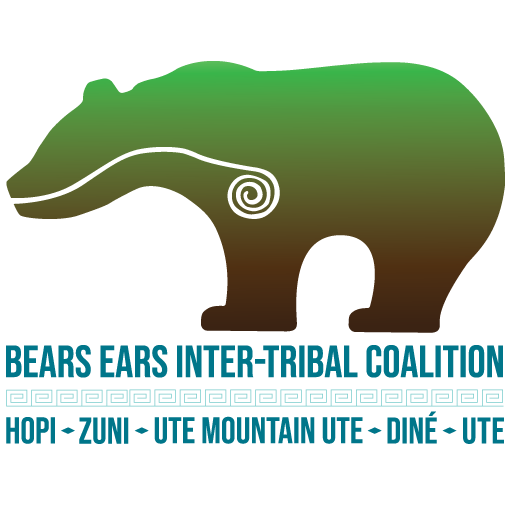
President Trump’s action on December 4, 2017, to revoke and replace the Bears Ears National Monument attacks the five sovereign nations with deep ties to the Bears Ears region and violates the separation of powers enshrined in our Constitution. No president has ever revoked and replaced a national monument before because it is not legal to do so. Only Congress may alter a monument.
In light of this blatant violation of law, the Native American Rights Fund, representing the Hopi Tribe, Pueblo of Zuni, and Ute Mountain Ute Tribe filed a lawsuit on December 4, 2017. Tribes, including NARF’s five clients, led the effort to establish the Bears Ears National Monument to protect the area still used for cultural and religious purposes from desecration and looting of the estimated 100,000 plus structures, sites, and objects in the area of the unique land formation.
“Bears Ears is one of the most important places for Indian Country, and that is why Indian Country came together to advocate for this important place. Trump’s attack on Bears Ears is an attack on all of us, and we will fight to protect it,” said NARF Staff Attorney Matthew Campbell.
The action to revoke creation of the Bears Ears National Monument followed on the heels of previous Trump Administration actions that violated Tribal sovereignty and catered to industrial interests. For example, issuing a permit to the Dakota Access Pipeline, issuing a permit to develop the Keystone XL pipeline, and revoking the Executive Order to protect the Bering Sea on April 28, 2017. “The Bears Ears monument as created by President Obama preserved hunting, fishing, gathering and grazing rights, and protected these incredible lands from widespread looting and oil, gas and mineral development,” said NARF Staff Attorney Natalie Landreth. “By the Trump Administration’s revocation’s own terms, in 60 days the revoked lands are open to “entry, location, selection, sale” and “disposition under all laws relating to mineral and geothermal leasing” and “location, entry and patent under mining laws. This is taking public lands that belong to the American people and selling to the highest bidder, there is just no other way to understand it.”
February 2018: Hopi Tribe v. Trump Combined with Other Cases
In late 2017, the Bears Ears Inter-Tribal Coalition case filed by NARF, Hopi Tribe v. Trump, became one of three cases filed against President Trump and his administration for the illegal dismantling of a national monument. At the end of January 2018, the courts consolidated the three cases dealing with the Bears Ears monument in to one case and the two cases addressing Grand Staircase-Escalante in to a separate case. The judge gave the government until March 16, 2018, to file a response to the original complaints.
The Trump administration requested to transfer the case to a Utah court. The Tribes filed a motion in opposition to transferring the case since the case affects more than one state’s residents and has nationwide importance.
On January 16, federal agencies initiated a public comment process on the issues related to the environmental analysis and planning criteria for the revised monument boundaries. The public comment period lasted until March 19, 2018. In legislation, Congress introduced bills to shrink and replace Bears Ears, codifying President Trump’s actions, as well as to expand Bears Ears. The Tribes unanimously support the bills that would expand Bears Ears and oppose the bills that would shrink and replace Bears Ears.
August 2018: Inflating Uranium Prices for Uranium Corporations Adjacent to Bears Ears
The Hopi Tribe v. Trump case remained on pause in late August 2018 while the judge decided which court would hear the case. While the case stalled, actions that threatened the sacred lands continued and the Trump administration rushed through planning stages to make the illegal monument boundary changes so that corporations could begin to mine the public lands.
At the same time, at the request of two uranium-mining companies, the U.S. Department of Commerce considered asking President Trump to impose mining quotas to artificially boost prices in spite of low demand for uranium. In a saturated uranium market where the U.S. already has enough uranium to meet defense needs through 2060, the low demand had lowered prices. The quotas would artificially boost prices and create much greater interest in mining on public lands. With mining claims already in place within the original Bears Ears National Monument boundaries, a uranium quota and subsequent higher prices would increase the value of the mining claims to the benefit of corporate interest.
In August, the Department of Commerce opened the proposed quotas to public comment until September 10. The department extended public comments until September 25, 2018.
September 2018: Venue is Set for Bears Ears Cases
Federal Judge Tanya S. Chutkan ruled on September 24, 2018, that the cases filed against the Trump Administration’s revoke and replacement of the Bears Ears and Grand Staircase-Escalante National Monuments would remain in the U.S. District Court for the District of Columbia—where originally filed. Judge Chutkan also ruled that the Department of the Interior must alert the Tribes at least 48 hours before allowing any ground disturbing activities on the disputed lands. With the issue of venue decided, the case moved forward. Judge Chutkan’s order called for the parties to begin briefing in early October 2018.
“We are eager to move forward with this case and to stop President Trump’s illegal actions against these lands, which are of utmost importance to the Native peoples in the region but important to the legacy of America for all citizens,” said NARF Staff Attorney Natalie Landreth. “The administration’s actions lack any legal authority and would open the Bears Ears region to exploitation by individuals and industries seeking profit regardless of the historical, cultural, and scientific importance of the area to Tribes and others. The removal of these protections is not only morally wrong, it is illegal.”
November 2019: Hopi v. Trump Complaint Amended
On November 7, 2019, the Native American Rights Fund, representing the Hopi Tribe, Pueblo of Zuni, and Ute Mountain Ute Tribe filed an amended complaint to protect the Bears Ears National Monument. The filing follows a recent order from the court.
“Since day one, it has been clear actions taken by President Trump are illegal. He has no authority to revoke the Bears Ears National Monument. Our amended complaint makes it clear that the Tribes were not only harmed the minute he signed the Proclamation, but also with each passing month he causes new damage by allowing new mines, new leasing, new off-road vehicle paths and other destructive practices,” said NARF Staff Attorney Natalie Landreth.
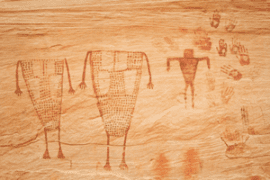
The amended complaint addressed impacts that occurred since President Trump signed his proclamation attempting to revoke the Bears Ears National Monument, including: drilling, mining, mineral exploration, off-road vehicle use, vandalism, looting, and grave robbing. Mining had already begun at the time NARF amended the Hopi v. Trump case, and oil and gas leasing was imminent. Since Trump’s Proclamation, six new mining claims had been filed. The amended complaint argued all harm caused by each claim was a direct result of the Trump Proclamation.
Encroaching threats could affect future tribal ceremonies. For example, “the Perfect Kiva,” a well-preserved ancient ceremonial kiva, lost protections. Protections also are gone for Valley of the Gods, a valley of towering spires the Navajo consider ancient warriors frozen in stone. These sites and tens of thousands of others, are open to “casual collecting,” industrial development, and increasing motorized and recreational use. This is unacceptable.
January 2020: Request for Partial Summary Judgement
On Thursday, January 9, 2020, the tribal plaintiffs in the Bears Ears National Monument lawsuit filed a motion for partial summary judgment. The motion asked the judge to rule that President Trump’s attempt to reduce Bears Ears is beyond the president’s authority. Quite simply, a president does not have the authority to revoke an established national monument.
“In an act untethered to principal or caselaw, President Trump did what no other President has done: revoked a national monument and replaced it with two small units comprising less than 15 percent of the original size of the Monument. In so doing, he acted well beyond the law and well beyond the Constitutional limits of his power,” said NARF Staff Attorney Natalie Landreth in the motion for summary judgement. “Rich in ancient and modern Native culture, to the Tribes, Bears Ears National Monument is a living and vital place where ancestors passed from one world to the next, often leaving their mark in petroglyphs or painted handprints, and where modern day tribal members can still visit them. The Tribes worked for years to gather evidence and make a case for the protection of this landscape. Recognizing that Bears Ears was exactly the kind of place for which the Antiquities Act was created, President Obama designated the Monument on December 28, 2016.”
Less than a year later, in an effort to free up lands for uranium mining and other extractive industries, President Trump purported to revoke the Monument and replace it with two smaller, non-contiguous monuments. A stunning abuse of the Antiquities Act by any measure, the Trump Proclamation removed 85 percent of the original monument lands from protection, and removed 100 percent of protection from tens of thousands of cultural objects in the excised lands.
The issue of law is simple: whether the President had the authority to do what he did. He clearly did not. Neither the plain text of the Antiquities Act, nor its legislative history can be reasonably construed to allow the President to break apart a national monument to serve corporate interests. To the contrary, in revoking the original Bears Ears Monument and replacing it with two remnants, President Trump usurped power reserved only to Congress – a power that Congress has repeatedly reaffirmed and claimed for itself. The tribal plaintiffs asked the judge to acknowledge these facts and rule in favor of the first, second, and third claims in the tribal plaintiff’s amended complaint.
January 2021: Executive Order to Review Bears Ears Boundary Changes
On Jan. 20, 2021, President Biden issued Executive Order 13990 that mandated that the Secretary of Interior should review Trump’s 2017 proclamation to determine if the U.S. government should restore Bears Ears National Monument boundaries. All parties had completed briefing in the case in 2020, and, in light of the Executive Order, the Biden administration requested a stay in the case pending the review.
April 2021: Stakeholder Input Sought in Review of Bears Ears National Monument Changes
U.S. Department of Interior Secretary Deb Haaland announced a trip to Utah in April 2021 to listen to stakeholders about changes to Bears Ears National Monument boundaries. The Bears Ears Inter-Tribal Coalition, including Native American Rights Fund (NARF) clients the Hopi Tribe, Pueblo of Zuni, and Ute Mountain Ute Tribe, issued a statement of support of Executive Order 13990 on March 17 and recommended the administration restore the Bears Ears National Monument to its original boundaries.
“Today’s announcement that Secretary Haaland will be traveling to Utah to sit down and hear from stakeholders next month, is also welcome news to us. However, we still believe that protections need to be quickly restored to protect Bears Ears, and its rich, but fragile, cultural and natural resources. Thus, we reiterate our request to President Biden to address the unlawful action taken by President Trump and to protect the full 1.9 million acres as the Bears Ears National Monument,” said the Coalition’s statement.
“In order to protect the unique cultural resources and fragile landscape that comprise Bears Ears, prompt Presidential action is needed to correct the unlawful action taken by the last administration that purported to revoke the Monument. We also ask that President Biden reaffirm and reestablish the Bears Ears Commission as configured and authorized by President Obama’s 2016 proclamation establishing the Monument,” said the Coalition statement. “This said, we remain open to dialogue with others about the most effective ways to protect and manage this special place. This dialogue began more than a decade ago as a grassroots effort and included nearly five years of discussions between our Tribal Nations, the Utah Congressional delegation, local communities, non-governmental organizations, and federal officials before President Obama established the Monument. We were pleased to continue these discussions today with Utah Governor Cox, Senator Mitt Romney, and Congressman John Curtis in an effort to find areas of common ground.”
June 2021: An Urgent Need to Protect Bears Ears
On June 4, 2021, The Bears Ears Inter-Tribal Coalition, including Native American Rights Fund (NARF) clients the Hopi Tribe, Pueblo of Zuni, and Ute Mountain Ute Tribe issued a statement expressing an urgent need to protect Bears Ears as the White House considered the review provided by Secretary of Interior Deb Haaland. The statement said:
“The Hopi Tribe, Pueblo of Zuni, Navajo Nation, Ute Indian Tribe, and Ute Mountain Ute Tribe, filed a 2018 lawsuit against the Trump Administration’s illegal actions to revoke and replace the Bears Ears National Monument boundaries. The Tribes recognized the importance of maintaining the long-sought protections established for this sacred and incredibly valuable landscape. In January of this year, that case was stayed to allow the Biden Administration to do a review of several monuments, including Bears Ears National Monument. This week, Secretary of the Interior Haaland submitted the results of that review to the White House.
The Tribes look forward to seeing swift action from the Biden Administration to protect these imperiled public lands and all that they hold. Recent developments directly and immediately threaten the lands and resources found within the original Bears Ears National Monument boundaries:
- Since President Trump’s 2017 actions to reduce protections for the region, new hard rock mining claims have been located in the original Bear Ears boundaries. Since March 2021 at least four new claims have been recorded.
- The Bureau of Land Management, Utah, recently received more than 100 oil and gas lease nominations throughout the eastern section of the original Bears Ears monument. There are approximately 60,000 acres of proposed leases in the Bears Ears region that the tribes seek to protect, with roughly 43,000 acres within the monument boundaries established by Obama.
- Vandalism of sacred Native items in the region continues. In April 2021 alone, two acts of vandalism involving thousands-years-old petroglyphs occurred in the area.
The recent activities described above highlight the need for swift presidential action. The Tribes remain hopeful that Secretary Haaland’s report to the White House recognizes the urgent need to protect this unique cultural and scientific resource.”
October 2021: Presidential Proclamation on Bears Ears National Monument
President Biden reinstates protections for the Bears Ears National Monument in an October 8 Presidential Proclamation. From the proclamation:
President Barack Obama’s establishment of the Bears Ears National Monument in Proclamation 9558 of December 28, 2016, represented the culmination of more than a century of efforts to protect the ancestral homeland of Tribal Nations that all refer to the area by the same name — Hoon’Naqvut (Hopi), Shash Jaa’ (Navajo), Kwiyagatu Nukavachi (Ute), and Ansh An Lashokdiwe (Zuni): Bears Ears. Preserving the sacred landscape and unique cultural resources in the Bears Ears region was an impetus for passage of the Antiquities Act in 1906. As early as 1904, advocates for protection of cultural landscapes described for the Congress the tragedy of the destruction of objects of historic and scientific interest across the American Southwest and identified the Bears Ears region as one of seven areas in need of immediate protection. Nevertheless, for more than 100 years, indigenous people, historians, conservationists, scientists, archaeologists, and other groups advocated unsuccessfully for protection of the Bears Ears landscape. It was not until the Hopi Tribe, Navajo Nation, Ute Indian Tribe of the Uintah and Ouray Reservation, Ute Mountain Ute Tribe, and Pueblo of Zuni united in a common vision to protect these sacred lands and requested permanent protection from President Obama that Bears Ears National Monument became a reality. Few national monuments more clearly meet the Antiquities Act’s criteria for protection than the Bears Ears Buttes and surrounding areas. This proclamation confirms, restores, and supplements the boundaries and protections provided by Proclamation 9558, including the continued reservation of land added to the monument by Proclamation 9681 of December 4, 2017.
Biden Presidential Proclamation on Bears Ears
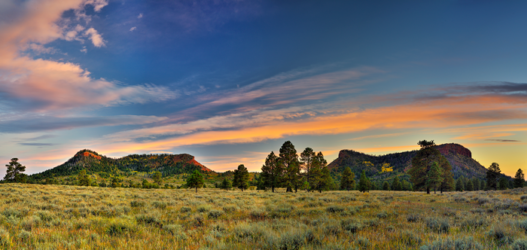
June 2022: Co-Management Agreement for Bears Ears National Monument
In a positive step forward for government-to-government relations, on Saturday, June 18, 2022, the Ute Mountain Ute Tribe, Navajo Nation, Ute Indian Tribe of the Uintah Ouray, Hopi Nation, and Pueblo of Zuni signed a historic, one-of-a-kind agreement to share management responsibilities for the Bears Ears National Monument. The tribal coalition will work with the federal government to address land planning, management, and conservation, and to protect traditions “that are part of the tribal nations’ way of life on these lands.”
December 2022: Tribes Intervene in Consolidated Cases
On November 18, 2022, the Hopi Tribe, Navajo Nation, Ute Mountain Ute Tribe, and the Pueblo of Zuni moved to intervene in two lawsuits in the U.S. District Court for the District of Utah. “Bears Ears sustains life. Bears Ears provides food, medicine, cultural items, and ceremony sites,” said Zuni Pueblo Lieutenant Governor Carleton R. Bowekaty. “As sovereign nations and Bears Ears National Monument co-managers, we have the right to intervene in these lawsuits. As stewards and people of this land, we hold a responsibility to protect Bears Ears.”
Read the motions to intervene in Garfield County v. Biden and Dalton v. Biden.
The two lawsuits, Garfield County v. Biden, filed by the state of Utah and two Utah counties, and Dalton v. Biden, filed by recreationalists and a mining company, seek to overturn President Biden’s 2021 proclamation that reaffirmed Bears Ears National Monument’s original boundaries. Through the proclamation, President Biden sought to correct action taken by then President Trump, who issued a 2017 proclamation purporting to divide the monument into two much smaller parcels, which exposed 85% of the original monument to vandalism and exploitation by extractive industries. NARF represents the Hopi Tribe, Ute Mountain Ute Tribe, and the Pueblo of Zuni in the move to intervene.
“The two lawsuits seek to eviscerate the Antiquities Act and deprive Bears Ears of the protections it so desperately needs,” said NARF Deputy Director Matthew L. Campbell. “The tribal governments will fight to protect these places.”
During the four years between the Trump and Biden proclamations, private interests lined up to exploit a region that has drawn people to it for more than 13,000 years. Hard rock miners staked claims that threaten the health and welfare of local Indigenous communities, perpetuating the tragic legacy of uranium mining in the region. The oil and gas industry flooded the Bureau of Land Management with requests to exploit 60,000 acres within original monument boundaries.
“At Bears Ears, the Hopi, Ute Mountain Ute, and Zuni tribal governments continue their efforts to protect a shared natural treasure against destructive private interests benefiting a few at the expense of Indigenous peoples and the public writ large,” said NARF Staff Attorney Jason Searle.
The court consolidated the Garfield County and Dalton lawsuits into one. On December 8, 2022, U.S. Magistrate Judge Paul Kohler granted the Tribes motions to intervene.
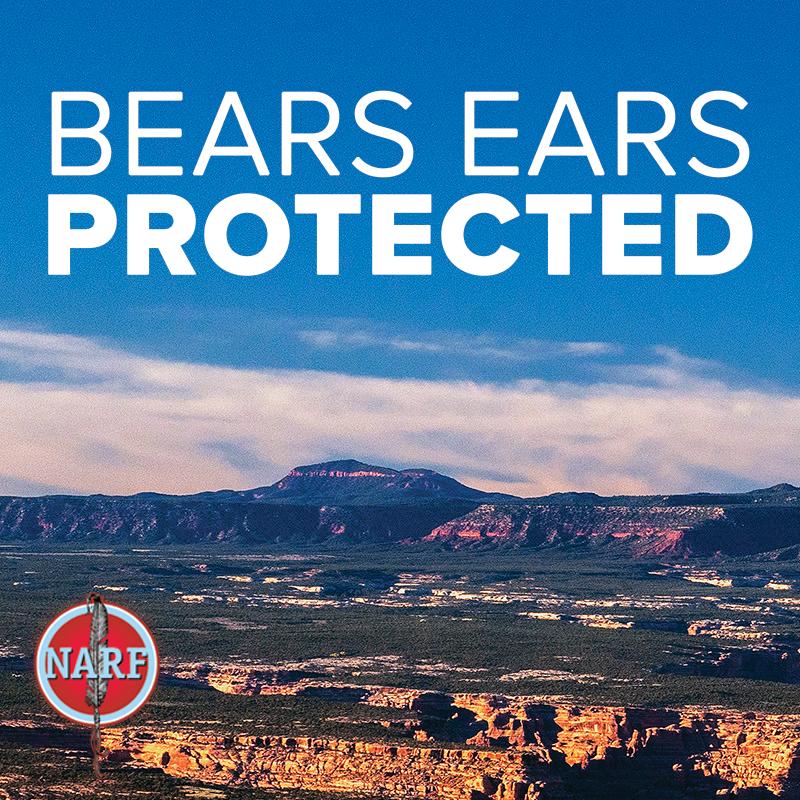
August 2023: Case Dismissed and Bears Ears Protections Upheld
On Friday, August 11, 2023, United States District Judge David Nuffer of the United States District Court of the District of Utah granted motions to dismiss the cases challenging the Bears Ears National Monument Designation.
January 2024: Tribes Respond to Appeal and Ongoing Attempts to Undermine Boundaries
On Tuesday, January 9, 2024, the Hopi Tribe, Navajo Nation, Pueblo of Zuni, and Ute Mountain Ute Tribe filed their response in Garfield County et al. v. Biden et al. in the U.S. Court of Appeals for the Tenth Circuit. The consolidated case was appealed to the court in October 2023 as part of an ongoing attempt to undermine the boundaries of the Bears Ears and Grand Staircase Escalante National Monuments.
In 2021, President Biden reaffirmed the boundaries of the Bears Ears National Monument with a presidential proclamation. More than a year later, the state of Utah along with Garfield and Kane Counties, individual recreationalists, and mining interests filed two lawsuits to overturn the proclamation. The cases were consolidated. The Native American Rights Fund (NARF) represents the Hopi Tribe, Ute Mountain Ute Tribe, and the Pueblo of Zuni as they, along with the Navajo Nation, intervened in the consolidated case.
The U.S. District Court of the District of Utah dismissed the consolidated cases in August 2023 for lack of jurisdiction. The judge found (among other things) that the proclamation was not judicially reviewable because the Antiquities Act allows presidents to create national monuments at their discretion.
“Unfortunately, the state and counties are determined to use taxpayer money to pursue a case that is based on a list of grievances and political theater rather than on legal standing,” explained NARF Deputy Direct Matthew Campbell. “As we detailed in this brief, the plaintiffs lack standing to bring suit, and the courts have held for over a century that presidents can create national monuments. They may believe in their cause with vigor, but so do the Tribal Nations who have generations of connections to the region. And, the Tribes have the law on their side.”
Each of the five Tribal Nations have cultural, religious, and historic connections to the Bears Ears region. Whether those ties are to the sacred towering spires in the Valley of the Gods, the ancient migration routes throughout the region, the ceremonial sites that are still used to this day, or the many historic and cultural items that have been left behind by their ancestors, Bears Ears is a traditional and historic homeland for each of the Tribal Nations.
How Can I Help Protect Bears Ears?
Please join NARF and our clients, as well as other tribes and people in the region in working to protect this unique land formation from commercial exploitation, environmental degradation, and pollution. Your donation will assist our nonprofit legal organization in the ongoing work to help our clients preserve this sacred place central to the ongoing practice of their religion, culture, and lifeways.

To receive the latest news on this and other important issues impacting Native peoples, please subscribe to the NARF newsletter.


